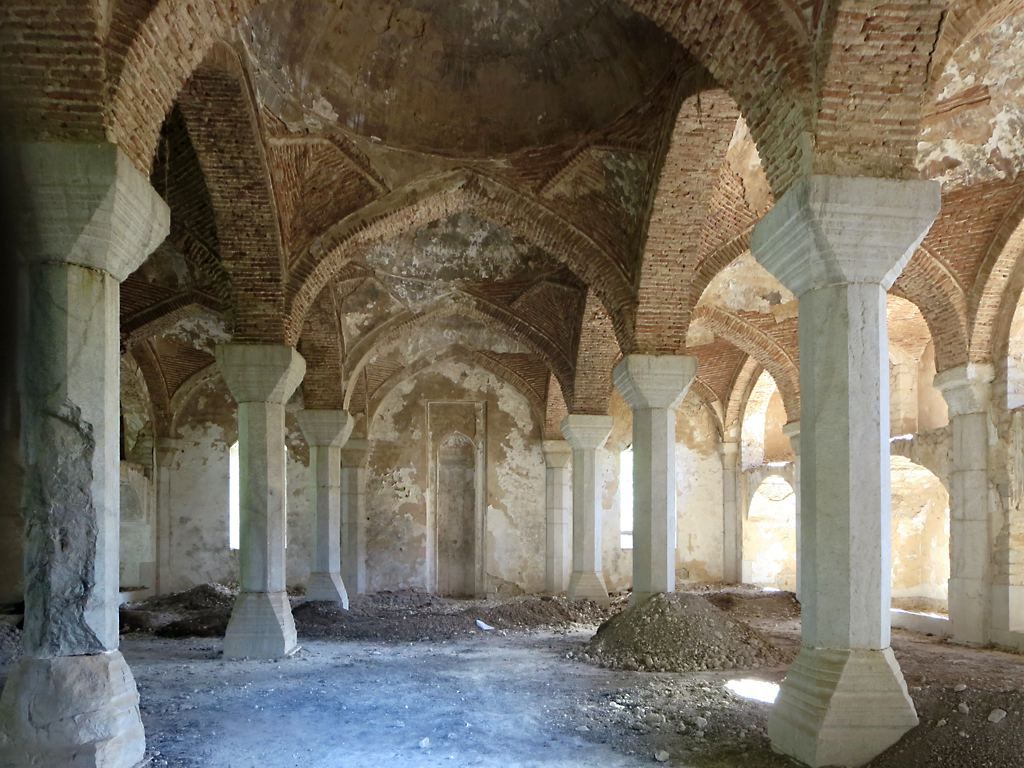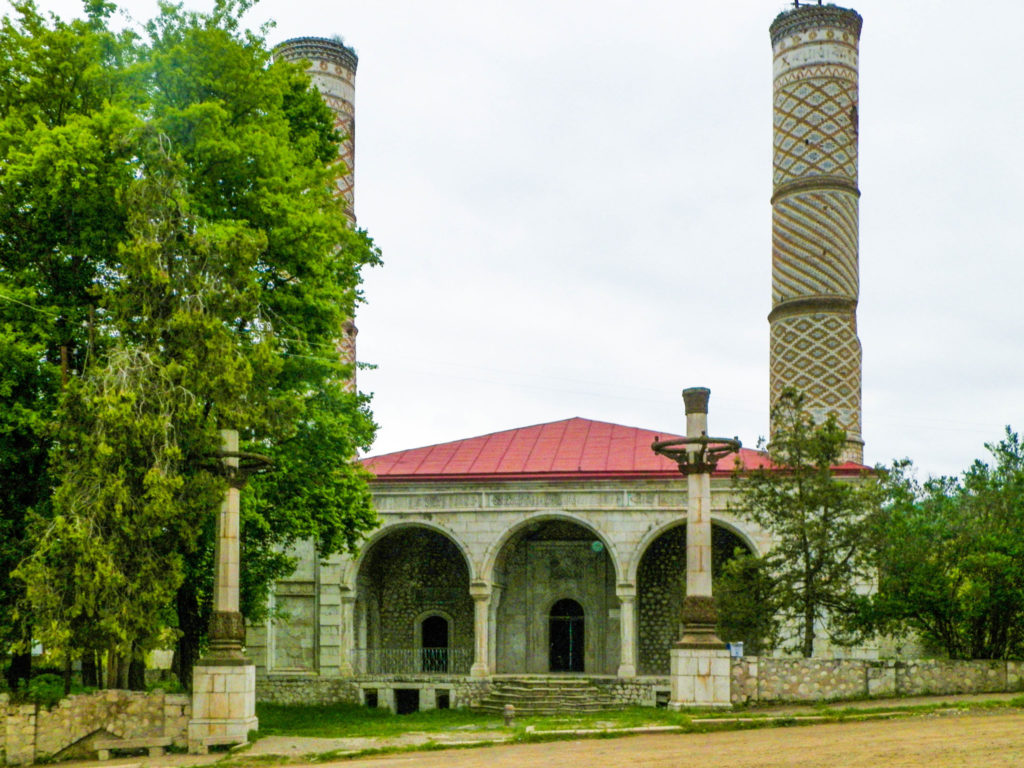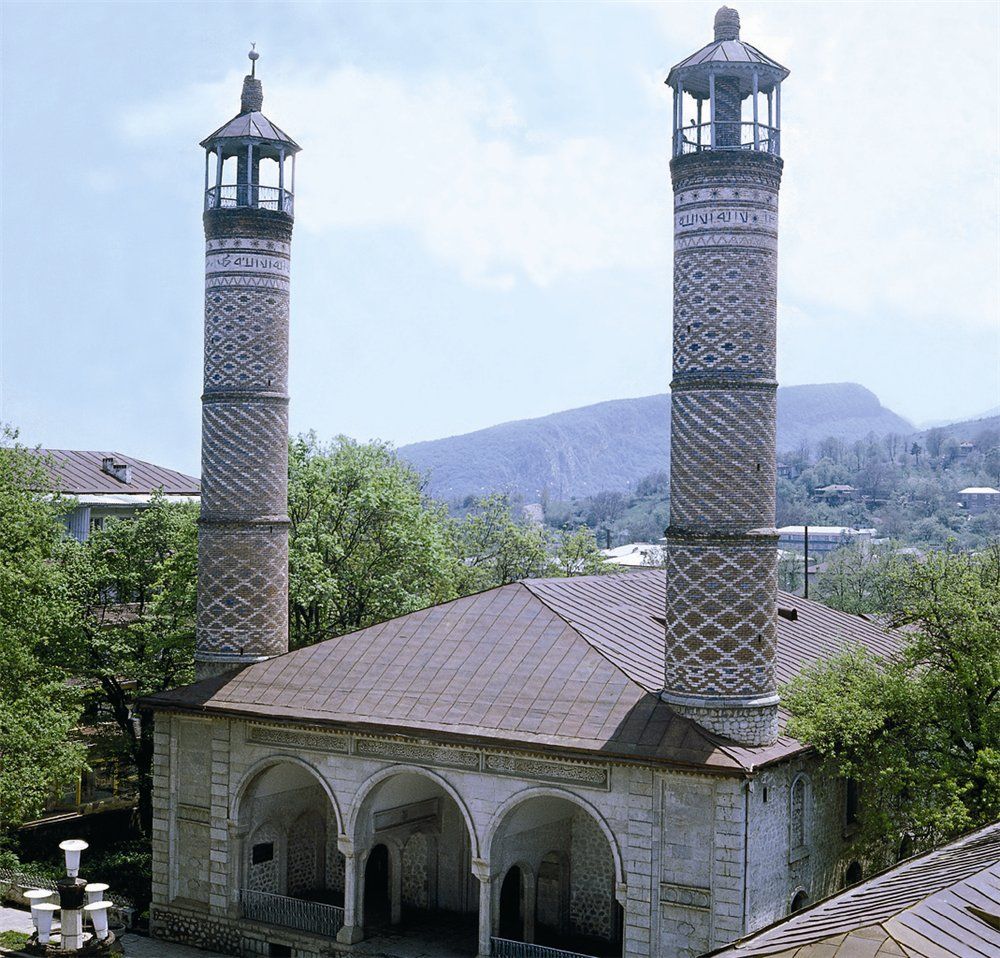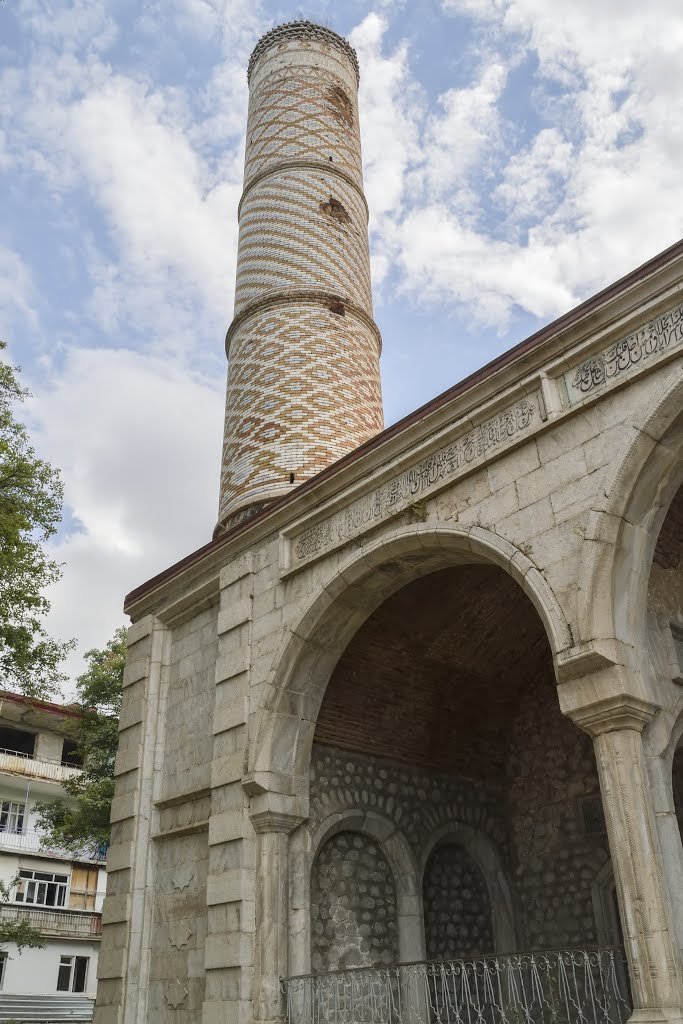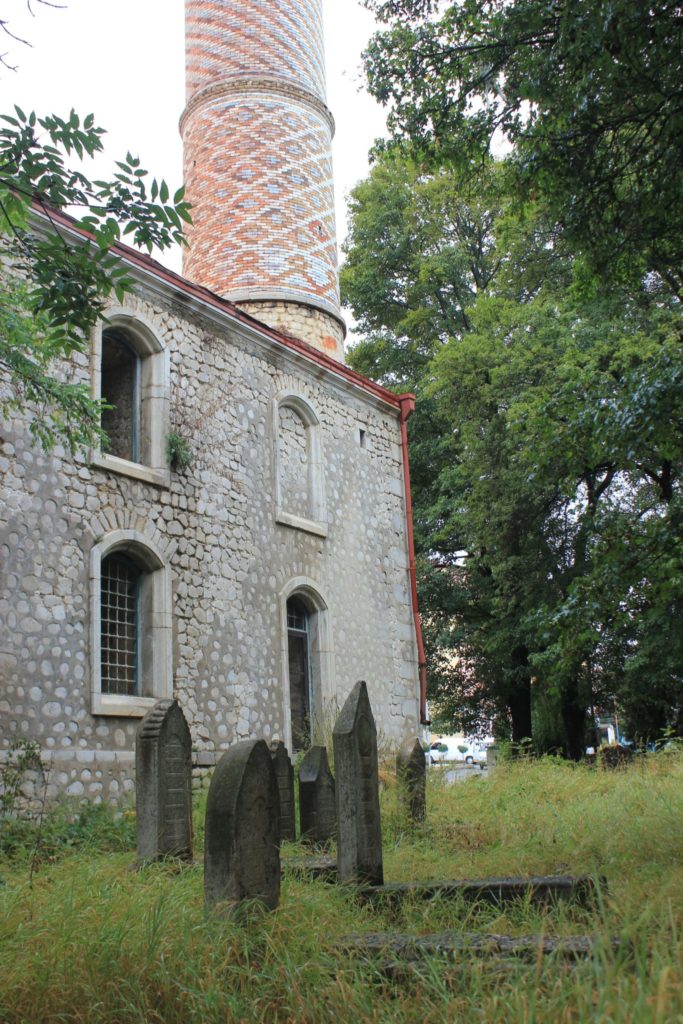Yukhari Govhar Agha Mosque
The Yukhari Govhar Agha Mosque is one of those buildings that have a dominant cultural and religious position in the architectural ensemble of the central square of Shusha city of Azerbaijan and is considered one of the most valuable monuments of the Shusha State Historical and Architectural Reserve. The Mosque was built by Karbalayi Safikhan Sultanhuseyn oglu Garabaghi, one of the prominent architects of Azerbaijan that constructed the most valuable historical and cultural piece not only in Shusha but also in entire Karabakh, at the expense of Govhar agha, the daughter of Ibrahinkhalil khan, during 1883-1884.[1]
The name of the Yukhari Govhar Agha in the Azerbaijani language refers to the location of the Mosque. Thus, the city of Shusha consisted of 17 mahallas (quarter/district/neighborhood) that were divided into upper (yukhari) and lower (ashaghi) mahallas. Yukhari Govhar Agha Mosque is located in the upper (yukhari) part of the city; therefore the Mosque was named as it is.
The historical sources about Shusha city indicate that previously there was another mosque that was built with thatches in the present location of Yukhari Govhar Agha Mosque by Panahali Khan, the founder of the Karabakh Khanate. Later on, in 1768, this mosque was replaced by the stoned mosque by Ibrahimkhalil Khan. However, due to its poor appearance without a minaret, the mosque built by Ibrahimkhalil Khan was completely destroyed with the order of his daughter Govhar Agha and replaced with a new mosque with twin minarets called Yukhari Govhar Agha Mosque.[2]
The prayer hall of the Yukari Govhar Agha Mosque is three-nave, around 190-185 meters. From the northern part, a three-beam veranda gives a rectangular shape (26.5 x 21.5 meters) to the Mosque. In the veranda corners, there are two minarets and stairs to the balconies, which are used to host the women’s premises of the prayer hall. There are 6 stone columns in the Mosque that divided the prayer hall into naves. While the side sections are under-pointed coverage, the two square parts are domed. The interior is lighted through double windows. The Mosque has two minarets. The entire building is made from stone, but the minarets are of bricks. “The cylindric bodies of the minarets have horizontal belts, and each section is laid on by different brick patterns”.[3] This construction technique, applied by the architect Karbalayi Safikhan Garabaghi for all the big religious monuments that he built in Karabakh, including those of Agdam Juma Mosque and Ashaghi Govhar Agha Mosque. Like in the last two mosques, the platform of the minaret of the Yukhari Govhar Agha Mosque was made of natural limestone. However, the geometrical ornaments of the minarets in the Yukhari Govhar Agha Mosque do not resemble the Ashaghi Govhar Agha Mosque. It has similarities with the minarets of the Agdam Juma Mosque. “The attic roof of the minarets is made of wood. Its end is decorated with a crescent-shaped figure”.[4]
The Yukhari Govhar Agha Mosque was used as a history museum from 1969 until the occupation of Shusha by the Armenian Armed Forces in May 1992. During the invasion of the city, Armenians destroyed the minarets of the Yukhari Govhar Agha Mosque. While undermining the facts about the history of the Mosque, they were trying to present the Mosque as a Persian one. By this kind of act, during 30 years of occupation of the Nagorno-Karabakh and surrounding regions, Armenians tried their best either to armenianize many historical and religious monuments or to modify them to falsify their history for defying their identity. “Restoration” of the Yukhari Govhar Agha Mosque in Shusha is part of his kind of policy of the Armenian invaders for appropriating “material, cultural and religious monuments in Azerbaijan and change their origin. Thus, by “rebuilding” the [Yukhari Govhar Agha Mosque], the aggressor country, trying to present this mosque as a Persian mosque, seeks to cast a shadow over the fact that Shusha is an ancient Azerbaijani city”.[5]
[1] Gurbanov, Rafi, Armenian Terror: religious and historical monuments of Azerbaijan (Baku, 2018), p. 18.
[2] Gurbanov, Armenian Terror, p. 19. See also: A letter of Appeal by the State Committee on Religious Associations of the Republic of Azerbaijan to the international authority on replacing Azerbaijani scripts of “Yukhari (Upper) Govhar aga” mosque by Armenia in the occupied city of Shusha. DK-400g, 25 July 2018.
[3] Ministry of Culture and Tourism of the Republic of Azerbaijan, Garabakh: The Eternal Memory of Azerbaijan Heritage, (2008), pp. 21-23.
[4] Kurt, Salih, “Azerbaijani monuments in captivity: Shusha district”, Trtajans.eu, 27 October 2020. https://www.trtajans.eu/66-education-career/guide/566-shusha-district.html.
[5] Mahmudov, Faig, “Azerbaijani MFA comments on news disseminated by Armenian media regarding repair of Yukhari Govharagha mosque”, Onlayn Xəbər Agentliyi (ONA), 08 October 2019. https://ona.az/en/nagorno-karabakh/azerbaijani-mfa-comments-on-news-disseminated-by-armenian-media-regarding-repair-of-yukhari-govharagha-mosque-9234.
